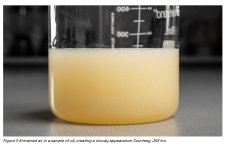That's a fair question, Harry. And I agree that details are sketchy. Is there a pressure gauge or not? If so, why does the OP not tell us the pressure when the system is free flowing vs lifting| vs deadheaded? Just saying "not much pressure"equals "not much information".
As to why suspect a suction leak, it's because I always go first for the simplest things which could cause the problem, and then work my way to the more difficult and less common. A suction leak is many times more common than a failed hydraulic pump. And also, the OP said he noticed the following things, all of which could be due to severely aerated fluid.
1. The problem first started when he was having issues with the FEL, slowly creeping down .
2. He pulled the valve (which valve?) apart and put in a re-seal kit (?)...another mystery.... .
3. The OP did notice sort of a wheezing coming from the pump area. It sounded like cavitation.
4. The 3pt was said to be working - but when he checked it again, it only works when it is not loaded. No details on that either. We don't know if it just won't lift a load or if it can be made hold a load. And again, no pressures.
Sure it might be a failed pump. But it could also be several other simpler things which so far haven't been checked.
rScotty

